A 56% DROP IN IMMIGRATION HITS NEW YORK



Get outta town: Suburbs balk at paying ‘unfair’ MTA tax

 BY CAROLINE SPIVACK
BY CAROLINE SPIVACK
Suburban lawmakers want to derail Gov. Kathy Hochul’s proposal to raise the payroll mobility tax on New York metropolitan area businesses.
e governor unveiled her plan for the tax increase this month as part of her budget proposal, estimating it would raise $800 million a year toward funding the Metropolitan Transportation Authority’s pandemic-induced, $4.5 billion budget de cit over the next four years.



But some lawmakers in the city’s northern and eastern suburbs are calling for an exemption for their constituents, saying they do not equally bene t from MTA service.
THE ESTIMATED amount the tax would raise per year. $4.5B











THE MTA’S COVID-induced budget de cit over the next four years.
eir protests add to a chorus of concerns over Hochul’s plan. In New York City, multiple legislators oppose the tax increase as too modest. Instead, they want to see an increase to the state’s corporation tax to fund the beleaguered transportation authority. e Adams administration, meanwhile, has opposed the state’s call for the city to increase its annual contribution to the MTA by $500 million, saying it’s nancially untenable.
e uproar forecasts charged















See TAX on page 22



VC tips from Black female founders


POWER CORNER Jacobs on his vision for the state’s Democratic party PAGE 11 ASKED & ANSWERED
PAGE 7 TECHNOLOGY
Why the legal cannabis rollout actually isn’t off to a slow start
PAGE 3 BUSINESS SPOTLIGHT SUPPORTING MENTAL HEALTH CARE PROVIDERS PAGE 23 CRAINSNEWYORK.COM | FEBRUARY 27, 2023 NEWSPAPER VOL. 39, NO. 8 © 2023 CRAIN COMMUNICATIONS INC.
City legislators say plan doesn’t go far enough
TRANSPORTATION
The
decrease in new arrivals is bad for business in a city that depends on foreign-born workers PAGE 15 HOCHUL’S PROPOSAL $800M
IMMIGRATION
BUCK ENNIS
Major commercial waste reform delayed over fears of small-business price hikes
 BY NICK GARBER
BY NICK GARBER
Along-delayed program designed to transform the way the city collects trash from businesses is inching forward. Fears of imposing onerous costs on small businesses have contributed to the slow rollout, officials testified last Wednesday.
A product of years of advocacy, a 2019 law divides the city into 20 commercial waste zones, in which as many as 68 private collectors will be charged with picking up businesses’ garbage. The aim is to tame
effect in 2021, but the pandemic pushed back that timeline. And recent reports suggested the city Sanitation Department—charged with overseeing the new zones—was slow-walking the program.
Sanitation Commissioner Jessica Tisch told City Council members Wednesday that the agency was committed to implementing the program—even as she said the first pilot zone might not begin until the second half of next year.
the current unruly system, in which around 90 private haulers speed around city streets as they compete to serve 100,000 businesses—resulting in unsafe driving, crashes and overlapping routes that lead to more carbon emissions.
The new system was set to take
In attempting to explain the deliberate pace, Tisch said the city is focused on ensuring that small businesses will not face any significant price increases for their trash pickups once the program takes effect. She pointed to the cautionary tale of Los Angeles, in which similar reforms adopted in 2017 led to severe increases in the costs paid by businesses.
“I don’t want to see massive price increases for small businesses,” Tisch said, calling such an outcome a “death knell” for the entire program.
To that end, she said, the Sanita-
tion Department is giving more weight to pricing as the agency evaluates bids from private haulers, among other tweaks aimed at keeping costs down.
New cost fears
Despite fears over new costs, the future program could be an improvement over the current system, in which businesses see “little price transparency” from private haulers, said Julie Menin, who chairs the council’s small-business commit-
tee. Small businesses often pay more for trash pickups than larger enterprises that produce more waste, Menin said.
About three dozen private waste companies are now in the running to be chosen for the final program, down from the 50 companies that initially applied to the city’s request for proposals in 2021, Tisch said. Those haulers fiercely opposed the 2019 law, fearing it would devastate their industry by narrowing the list of companies allowed to pick up
commercial waste.
It will take about two years to implement the full program after the first pilot zone is implemented next year, Tisch said. The intervening months will involve outreach to businesses, in which Sanitation Department workers will spend two months in each zone explaining the changeover, followed by a four-month transition during which the new carter will take over.

The department has budgeted $2.7 million for the outreach, with workers doing up to 20 site visits per day until the city’s 100,000 waste-producing businesses have all been contacted, Tisch said.
She pushed back on criticism of the program’s slow rollout, saying the time frame set by the previous council had been “wildly unrealistic.”
Sandy Nurse, who chairs the council’s sanitation committee, disputed Tisch’s claim that a rocky rollout could jeopardize the whole program.
“I don’t agree that we only have one chance to get this right,” Nurse said. “We will continue working on it until it works.” ■
New move for MSG? Exec surprises neighbors by saying the arena could go across the street
BY NICK GARBER
AMadison Square Garden
EVENTS CALLOUT
MAY 17
POWER BREAKFAST
Mark your calendar to hear Janno Lieber, chair and CEO of the MTA, interviewed live on stage by Crain’s Editor-in-Chief Cory Schouten.
DETAILS
Time: 8:30 to 10 a.m.
Location: 180 Central Park S. CrainsNewYork.com/pb_lieber
CORRECTIONS
■In the special section on Notable Black Leaders, first published Feb. 20, the profiles of Catrina Harding, Christina Swarns, Gilda Squire and Ingrid Walker-Descartes have been updated. The correct information can be found online at CrainsNewYork.com.
Entertainment executive made a startling claim during a public hearing on the arena’s operating permit: The company might be willing to move the Garden after all.
The remark came even as MSG owner James Dolan continues to assert that he has no intention of moving, and as the city is considering the Garden’s application for another operating permit. New York granted MSG a 10-year special license in 2013 with the understanding that the company would relocate the arena.
The statement, by Executive Vice President Joel Fisher, came toward the end of last Wednesday’s fourhour Community Board 5 meeting, at which neighbors grilled the company about why it should get another permit to keep the arena perched atop Penn Station, perhaps in perpetuity. Many board members seemed inclined to reject the company’s request, saying the arena should be moved to make way for an expanded Penn Station.
But Fisher, trying to reframe the discussion, said renewing the permit would not preclude an eventual
move. A suggestion raised earlier in the meeting—that the Garden could move right across Seventh Avenue—“probably would satisfy us,” he said.
“That would satisfy being right on top of a transportation hub,” he said, though he added that such a proposal would need to account for the costs of construction.
Fisher appeared to be referencing comments made minutes earlier by Stephen Marmon, a member of the public, who proposed moving the arena to the two blocks along the east side of Seventh Avenue be-
“This was certainly, for us, the first time that we’ve heard MSG express that they would consider this option,” Law-Gisiko said. “It really calls for great optimism and hope that we can reach an agreement that would be satisfactory for all parties.”
Redevelopment plan
A plan to move the Garden there would thrust the arena into the middle of Vornado Realty Trust’s Penn Station–area redevelopment plan, which calls for building highrise office towers—and potentially a casino—on the same blocks. The site now is home to aging office buildings and the soon-to-bedemolished Hotel Pennsylvania.
Reached for comment, an MSG Entertainment spokesperson put the move in hypothetical terms.
“If there was a realistic plan presented to us, that was centrally located, in close proximity to mass transit and that addressed the $8.5 billion in public funding that Empire State Development has estimated it would cost to move the Garden, we would of course listen,” the spokesperson said. “But this just hasn’t happened.”
The location discussed Wednesday is not brand new. For years, architect Vishaan Chakrabarti has proposed moving the Garden to the east side of Seventh Avenue as part of his firm’s proposals for a new Penn District.
tween West 32nd and West 34th streets “that provide the exact same heart-of-the-city location,” he said.
No such plan has ever been presented to the company, Fisher said. Still, after hours of debate, the comments came as a shock to board members, CB5 Chair Layla LawGisiko said.
But with Vornado’s plans put on hold amid financial turmoil, Law-Gisiko said it could be worth discussing putting the Garden on that block.
“If it were deemed, given the destruction that is being inflicted to our district by Vornado, that this particular superblock becomes a desirable site for MSG, I think it is a conversation that should be had,” she told Crain’s
And MSG itself has given thought to moving the arena. Earlier this year the company held talks about relocating the Garden to Hudson Yards.
MSG Entertainment needs the city to grant it a new permit to continue holding events with more than 2,500 spectators, once the company’s 10-year renewal of its initial 50-year permit expires in July. The monthslong process is expected to include an advisory vote by CB5 next month and culminate in a vote by the City Council. ■
2 | CRAIN’S NEW YORK BUSINESS | FEBRUARY 27, 2023 Vol. 39, No. 8, February 27, 2023—Crain’s New York Business (ISSN 8756-789X) is published weekly, except for no issue on 1/2/23, 7/3/23, 7/17/23, 7/31/23, 8/14/23, 8/28/23 and the last issue in December. Crain Communications Inc., 685 Third Ave., New York, NY 10017. Periodicals postage paid at New York, NY, and additional mailing offices. Postmaster: Send address changes to: Crain’s New York Business, Circulation Department, 1155 Gratiot Ave., Detroit, MI 48207. For subscriber service: call 877-824-9379; fax 313-446-6777. $140.00 per year. (GST No. 13676-0444-RT) ©Entire contents copyright 2023 by Crain Communications Inc. All rights reserved.
POLITICS
SPORTS
AROUND 90 PRIVATE HAULERS SPEED AROUND CITY STREETS AS THEY COMPETE TO SERVE 100,000 BUSINESSES
BUCK ENNIS
“THIS WAS CERTAINLY THE FIRST TIME WE’VE HEARD MSG EXPRESS THEY WOULD CONSIDER THIS OPTION”
“WHEN YOU HEAR THESE STORIES ABOUT WHITE GUYS GETTING $5 MILLION FROM AN IDEA ON A NAPKIN, IT’S NOT JUST BECAUSE HIS IDEA WAS THAT BRILLIANT OR BECAUSE PRIVILEGE IS THAT STRONG. IT’S MORE OF WHO HE SHOWED THE NAPKIN TO”


BLACK FEMALE FOUNDERS ADVISE HOW TO BEAT THE VENTURE CAPITAL ODDS

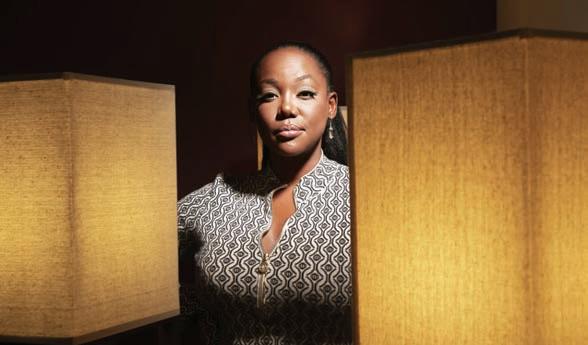 BY JACQUELINE NEBER
BY JACQUELINE NEBER
When Bea Arthur set out to raise money for e Di erence, a tech platform that aims to make mental health care more a ordable and accessible, she wanted to get her idea in front of the right people.
“When you hear these stories about white guys getting $5 million from an idea on a napkin, it’s not just because his idea was that brilliant or because privilege is that strong,” Arthur said. “It’s more of who he showed the napkin to.” e Di erence was the third company Arthur created. She already knew there was no winning formula for a successful fundraising round—only connections and relationships. And as a Black woman, she faced tougher odds than other founders. In 2019 Crunchbase reported
that only about 1% of venture-backed founders in this country are Black. Last year Crunchbase reported that Black founders received less than 2% of overall venture dollars in the U.S. Because of this, Black female founders of health-tech companies have had to learn strategies for winning over investors. And they want to pay forward what they’ve learned so the path gets easier for those coming after them.
Arthur learned the language of investors and started “being seen out there,” despite the fact that she had yet to secure money for her latest venture. She became an editorial contributor to the Forbes Women blog and developed a career-coaching video series for the publication. She consulted at Nike and built the rst Alexa skill for therapy at Amazon (which is how e
See FOUNDERS on page 22
“ASSUME YOU NEED TO SHOW EVIDENCE OF BEING A STAGE AHEAD OF WHERE YOU ARE. THE EVIDENCE WE’RE NEEDING TO SHOW TO MAKE INVESTORS CONFIDENT AND DE-RISK THE RAISE IS MORE IN LINE WITH WHAT I UNDERSTOOD [TO BE] A SERIES A LEVEL OF PROGRESS”
FEBRUARY 27, 2023 | CRAIN’S NEW YORK BUSINESS | 3 HEALTH CARE
ARTHUR learned how to speak the language of venture capitalists while fundraising for The Difference.
HARDIGAN created Mae after experiencing marginalization in health care—and wanting to do something about it.
BUCK ENNIS
BUCK ENNIS
Hedge fund boss turned Senate candidate offloads pair of Upper East Side homes
BY C. J. HUGHES
David McCormick, a former U.S. Senate candidate in Pennsylvania, has sold two homes on the Upper East Side amid reports that he might be considering another run to represent the Keystone State.
The pair of apartments at 151 E. 78th St., a red-brick condominium near Lexington Avenue, traded for a total of $14.3 million in an off-market deal that closed Feb. 1, according to public filings.

McCormick, who served as chief executive of the world’s largest hedge fund, Bridgewater Associates, from 2017 until last year, when he launched his Senate run, appears to have roughly broken even on his investment. In 2016 he bought the two apartments from the condominium’s sponsor for a total of $14.2 million, records show.
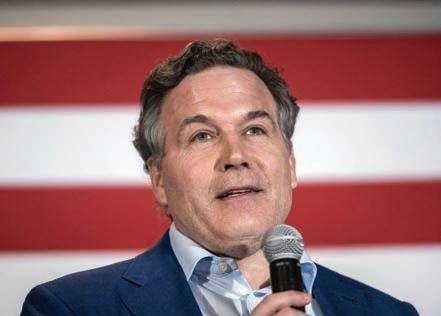
$14.3M
limited-liability company based in Natick, Massachusetts.
Last year McCormick sought to capture the Republican Party’s nomination for an open Senate seat in Pennsylvania—which appears to have prompted his purchase of a home in the East End of Pit tsburgh, the city where he was born, according to news reports.
But after a fierce primary battle against Dr. Mehmet Oz, who scored a key endorsement from Donald Trump, McCormick conceded the race in June. Oz lost the g eneral-election race to the Democratic nominee, John Fetterman.
The seller is technically listed as a shell company, Frosty Valley LLC. Frosty Valley happens to be the name of a resort near McCormick’s childhood home in Blo omsburg, Pennsylvania.
The address of Frosty Valley LLC is in Westport, Connecticut, according to the deed. Westport is also the headquarters of Bridgewater, a fund with $125 billion in as s ets under management including, controversially, Chinese state mone y. McCormick’s signature appears on the deal’s paperwork.
The buyer was Todany Trust, a
REAL ESTATE
Dur ing the course of the primary, McCormick labored to shed the image of a wealthy member of the East Coast elite, despite holding a degree from Pr incet on and earning a $22 million salary from Bridgewater in 2021.
In 2024 there will be another election for a U.S. Senate seat in Pennsylvania, and McCormick is considering jumping in again, according to a recent Bloomberg report.
The move out of one of Manhattan’s wealthiest enclaves, then, could b e seen as political positioning.
McC ormick is expected to release a book next month, Superpower in Peril: A Battle Plan to Renew America
McCormick, who is married to former Trump official Dina Powell, served in the Treasury Department under former President George W. Bush.
One of McCormick’s two New York apartments was the condominium’s maisonette, a 2-story house-within-a-building featuring six bedrooms, six baths and 4,500 square feet plus an 860-square-foot garden, according to an offering plan.
The other unit was a next-door studio, No. 1A, a 520-square-foot home presumably used as a guest pad or for staff.
Spruce Capital Partners developed 151 E. 78th St., a 14-home project that generated a haul of about $180 million, the offering plan shows.
Bridgewater’s billionaire chairman, Ray Dalio, who founded the company in 1975, announced during the fall that he was stepping down from the firm. The company’s current co-CEOs, who replaced McCormick, are Nir Bar Dea and Mark Bertolini.
A spokesman for Bridgewater declined to provide contact information for McCormick, who could not be reached by press time. ■
New residential project to rise at former Extell site
 BY NATALIE SACHMECHI
BY NATALIE SACHMECHI
Adevelopment site formerly owned by Extell Development on Manhattan’s Far West Side will give rise to an 11-story apartment building, according to documents filed with the Department of Buildings.
Extell had previously planned to construct a 32-story, mixed-use building that would contain 470 units, with 80 of them affordable. But the plans never came to fruition, and Extell sold the site in March to Great Neck–based ZD Jasper Realty for $52 million.
ZD Jasper’s new plans include 128 apartment units in a mixeduse building that will also have retail space and an ambulatory health facility on the ground floor, according to the filing. The building would comprise nearly
183,000 s quare feet once complete.
It ’s unclear whether the project includes any affordable units or if it will be a condo building. A representative for ZD Jasper did not res pond to a request for comment. It would be the company’s fir s t development in Manhattan— its portfolio includes 11 properties in Long Island City, Jamaica and Wo odside, including one commercial building.
Currently the developer is completing a tower in partnership w ith As cent Development at 4530 Pearson St. in Long Island City. That project will have 82 residential units and ground-floor retail s p ace.
ZD Jasper also recently completed Archer House, a 109-unit ap artment building at 148-31 88th Ave. in Jamaica. ■
4 | CRAIN’S NEW YORK BUSINESS | FEBRUARY 27, 2023
RESIDENTIAL SPOTLIGHT BLOOMBERG
SELLING PRICE for a pair of apartments at 151 E. 78th St.
MCCORMICK has sold two homes at 151 E. 78th St.
IN 2016 MCCORMICK BOUGHT THE TWO APARTMENTS FOR A TOTAL OF $14.2 MILLION
BLOOMBERG
151E78.COM
Our dedicated employees volunteer their time to deliver our Better Money Habits® financial education program — helping people in the communities we serve move ahead with financial tips, tools and resources.

We’re committed to helping people in New York City improve their lives through financial education. In the past 10 years, we’ve donated millions in national and local grants to help people learn the ins and outs of budgeting, saving and reducing debt.

 José Tavarez President, Bank of
José Tavarez President, Bank of


to bankofamerica.com/metroNYC to learn more What would you like the power to do?® Bank of America, N.A. Member FDIC. Equal Credit Opportunity Lender © 2023 Bank of America Corporation. All rights reserved.
community
Go
Champions of
Better Money Habits® Volunteer
America
York
New
City
Mayor forms unlikely alliance to thwart new charter schools
In some ways, the current education battle in Albany is incredibly familiar. The governor has proposed to increase the number of privately run, publicly funded charter schools in New York City. The mayor, for fiscal or ideological reasons, is opposed. With the state budget season looming, the horse-trading will commence.
What makes the current showdown different is the combatants involved. Andrew Cuomo, a staunch supporter of charter schools, is no longer governor. Bill de Blasio, a charter school skeptic, is not mayor. De Blasio’s successor, Eric Adams, campaigned as a much more charter-friendly Democrat, promising he wouldn’t actively oppose their expansion. Charter supporters, many of them well-heeled, were charmed. Billionaires including Kenneth Griffin, Daniel Loeb and Paul Tudor Jones donated to Adams or groups supporting him, including Strong Leadership NYC, a super PAC formed by the executive director of a pro-charter organization.
ment of Education at least $1 billion). He is forming an unlikely alliance with left-leaning Democrats in the state Legislature. Gov. Kathy Hochul, Cuomo’s replacement and a fellow recipient of charter donor cash, wants to remove the limit on the number of charters regionally while maintaining the overall statewide cap. Because a vast majority of charter schools are concentrated in the five boroughs, Hochul’s proposal could add dozens of new charter schools here—as many as 85—in the upcoming years.
ROSS BARKAN
Charter schools have a long, contentious history in New York. Legalized in the late 1990s, they’ve traditionally been supported by Republicans and moderate Democrats. Along with Cuomo, former Mayor Michael Bloomberg was a charter booster. The number of privately run schools ballooned during Bloomberg’s tenure, helped along by the Republicans who controlled the state Senate.
Now Adams, in arguing that the city can’t afford to fund new charter schools, is going against his donor base (he said he believes the expansion would cost the city Depart-
Charter supporters argue that the schools offer quality options—the equivalent of high-priced private schools that affluent New York parents seek—for working-class and poor students, many of them nonwhite, in neighborhoods with underperforming public schools.

Some networks, including Success Academy and Geoffrey Canada’s Harlem Children’s Zone, have drawn praise for significantly improving local students’ test scores.
But charters have encountered plenty of scrutiny. Success Academy, helmed by Eva Moskowitz, was criticized for its harsh disciplinary practices and was found, in 2019, to have violated the civil rights of students with disabilities. Unlike traditional public schools, charters are not obligated to educate every student.
The city and state teachers unions revile charters because the schools don’t have to employ unionized educators or follow the unions’ work rules. Democrats aligned with the teachers unions have always opposed the expansion of charter schools.
In some ways, the current clash in Albany is unprecedented. Cuomo tried to aggressively help charter schools, forcing de Blasio to ac-
cept a new rule that required the Department of Education to pay the rent of all charters or find them free space. Then, Republicans still had a majority in the state Senate, limiting the power of pro–teachers union Democrats. Once Democrats took control of the upper chamber in 2019, Cuomo abandoned efforts to raise the charter cap or devise new rules to strengthen them.
Now Hochul probably will try to find a way to grow the number of charters while the Democrats are in charge of the Assembly and Senate. Adams, her ally in the city, simply doesn’t want to pay for the new schools. Education committee cochairs in the Senate, John Liu and Shelley Mayer, have released statements denouncing Hochul’s plan.
What happens next is unclear. Hochul could trade a charter cap increase for other budget priorities Democratic lawmakers are seeking. Or she could abandon her push altogether.
In Albany, the future is always murky, and great change usually happens under the cover of darkness.
Quick takes
● Hochul got her wish and the state Senate took a full floor vote on her nominee for chief judge of the Court of Appeals, Hector LaSalle. To no one’s surprise (but her own, perhaps) LaSalle was roundly defeated, with almost every Democrat voting against him. Now Hochul will have to do what she should have done all along: Consult with the Senate over a more acceptable pick.
● It’s now up to the Assembly to pass legislation that would end the patronage operation at the New York City Board of Elections. The city and state deserve professional election administration. ■
Ross Barkan is a journalist and author in New York City.
Study: Pay could keep falling under Hochul’s plan
NICK GARBER
Gov. Kathy Hochul’s plan to peg the state’s minimum wage to inflation, while intended to boost pay, would still leave workers worse off than they were when the city last raised the figure four years ago, according to a new analysis by the Fiscal Policy Institute.
Workers’ hourly wages have already lost $1.78 of their value since the city implemented its $15 minimum wage in 2018, due to inflation that has occurred in that period. By 2026, under current inflation projections, Hochul’s plan would raise the wage to $16.30, but its value will have fallen to $12.48 in 2018 dollars.
“If $15 was a suitable wage for New York City workers in 2019, it seems reasonable that in real terms, it should be at least what we consider the suitable work wage going for ward,” said Andrew Perry, a senior policy analyst for the left-lean-


ing think tank. “There’s no reason to have that eroded by $2.50.”
Hochul acknowledged recent inflation when she rolled out the minimum wage proposal last month, saying that bringing relief to lowwage workers would help “tackle the affordability crisis head-on.”
But the Fiscal Policy Institute argues that the policy is too modest. Besides not accounting for last year’s unusually high inflation, it also caps annual wage growth at 3% in years where inflation exceeds that number.
It would cancel any increase in years when inflation is negative or unemployment rises by half a percentage point—as is expected to happen this year, with many economists forecasting a recession.
The $12.48 “real wage” by 2026 is thus a “best-case scenario” that relies on inflation projections from Hochul’s administration—which all fall below the 3% cap, Perry said. If inflation exceeds that number in
any ensuing year, the value of workers’ wages would fall even lower.
Since it was formally unveiled this month as part of Hochul’s $227 billion budget proposal, the minimum wage plan has gotten mixed reviews from both business and labor interests.
Progressives and some labor unions have gotten behind a bill by state Sen. Jessica Ramos of Queens
that would raise New York City’s minimum wage annually, to as much as $21.25 by 2026. It would then tie the minimum wage to inflation starting in 2027.
The bill, known as Raise Up NY, would include similar increases in the suburbs and upstate. It has drawn 19 co-sponsors in the Senate and 27 in the Assembly.
Some business groups have
come out against Ramos’ bill, suggesting it would be overly burdensome for employers. Ken Pokalsky, a vice president for government affairs at the Business Council of New York State, told Bloomberg this month that his group was more open to Hochul’s plan.
Some city officials have begun wading into the debate, including Comptroller Brad Lander, whose office released a report last week comparing the rival minimum wage proposals. By 2026, the Raise Up NY plan would affect 1.1 million workers, or about one-quarter of the city’s workforce—nearly double the 14% of workers who would benefit from the governor’s plan, Lander’s office found.
All told, New York City workers’ aggregate wages would rise by about $2 billion each year under Raise Up NY, compared with $300 million to $400 million annually under Hochul’s plan. ■
6 | CRAIN’S NEW YORK BUSINESS | FEBRUARY 27, 2023
ON POLITICS
POLITICS
GETTY IMAGES
Pattie Jacobs and her son Malik Sissoko, a Harlem Success Academy student, wait with Pattie’s sister Crystal Jacobs to see if her son Ian will be awarded a slot at the school. The long, contentious history of charter schools in New York continues.
BLOOMBERG
ASKED & ANSWERED
SCHERIL MURRAY POWELL JustÜs Foundation
 INTERVIEW BY OLIVIA BENSIMON
INTERVIEW BY OLIVIA BENSIMON
From her first cases as a cannabis attorney, Scheril Murray Powell knew she wanted to focus on equity and representation in the legal marijuana industry. Since then she’s helped seven states legalize cannabis. Part of New York’s approach to the legal cannabis market is to prioritize awarding the first licenses to those who’ve been affected by the criminalization and prohibition of marijuana. So in her current role as the chief operating officer of the nonprofit JustÜs Foundation, Murray Powell looks to help facilitate the entry of pre-legalization cannabis operators into the market.
Why is social equity so important to cannabis legalization in New York?


When we look at the legacy market—individuals who [sold] cannabis during the period of prohibition—that community is extremely diverse. And when you look at the cannabis consumer base, that community is extremely diverse. So as we’re building a new legal industry, we want to retain that diversity. Social equity is about looking at the business opportunity and making sure that the entrance points aren’t barred by unnecessarily over-regulating the plant. We need to have a framework for contributing to communities as we’re trying to remedy the harm that was done by the criminalization of cannabis.
The local rollout has seemed a bit slow. How can the process be sped up?
DOSSIER
WHO SHE IS Chief operating officer, the JustÜs Foundation
GREW UP Between Great Neck and Uniondale, Long Island
RESIDES Harlem
EDUCATION Bachelor’s in business management, Florida Atlantic University; JD, Florida International University
PAST LIFE Law is Murray Powell’s second career. She spent 14 years in the wireless industry before going back to school to get her law degree. Her first cannabis job was as general counsel for Minorities for Medical Marijuana, a Florida-based nonprofit that provides the training necessary to make the cannabis industry more diverse and equitable.
36 CHAMBERS She’s a big fan of Hulu’s biopic series Wu-Tang: An American Saga
It is misplaced to refer to the speed that the Of fice of Cannabis Management is working at in New York as slow. I think they're working stra tegically in order to honor the spirit of the Marijuana Regulation and Taxation Act, which has a strong emphasis on equity. So in order to honor that spirit, you have to define what that legislation looks like as executed in regulations, and that takes time. I think they’re being honest about the
DOESN'T KILL TO ASK
A REVOLUTION IN WOMEN'S HEALTH HAS BEGUN

pacing and their challenges and the due diligence that they’re doing to make sure that licenses are issued in accordance with the social equity targets that have been mapped out by the MRTA. We know what a legal industry looks like if it’s left to itself to diversify. It’s very homogeneous, and we don’t see the level of diversity that represents or mirrors the legacy industry or the consumer base. So the guardrails are necessary.
What pitfalls should New York avoid?
We just need to embrace creativity as far as how we ensure that New Yorkers get to participate and lead in the market. Analysis paralysis can be a problem. It doesn’t have to be perfect; it just has to be progressive. One thing that New York has done a great job of is being able to pivot and adapt with new information. That’s the biggest pitfall that I’ve seen in other tates: They’ll double down when it’s just like, “This isn’t working.” How deep in the hole do we have to get before you’ll turn around?
How should the city address the proliferation of unlicensed vendors?
We weren’t anticipating this gray market, and in many cases, they’re counter-equity. I’m definitely a proponent of making sure that we honor our commitment to those people who do meet the social equity criteria that they will have the priority that I have seen written into the regulations. I’m not ever going to be the person to say, “We need e arrests.” The mayor has indicated that he doesn't want to incarcerate; he doesn't want to arrest them. So I think that a really good strategy as far as approaching it is, one, educating the gray market as far as why equity has to be prioritized, but there will be opportunities for everyone. And two, also helping them understand what is the ght process to participate in the new legal market. They just need to be patient and wait their turn. ■
This interview has been condensed for space.

















IF THERE'S AN UNLOCKED GUN IN THE HOUSE
February 27, 2023 | CraIN’S NeW yOrK buSINeSS | 7
BUCK ENNIS
Guns are now the leading cause of death for kids. Learn more at Northwell.edu/LockGuns
New York should not stand in the way of immigrants seeking to join the workforce
New York’s immigrant population plays a vital role in the city, filling jobs across industries and skill levels and adding flavor to the world-renowned melting pot.
have not been able to fill in the gaps, however. There are government restrictions on how long they must be here before they can obtain a work permit.
Thankfully, many people still want to make it in New York.
president & ceo K.C. Crain
group publisher Jim Kirk
publisher/executive editor
Frederick P. Gabriel Jr.
EDITORIAL
editor-in-chief Cory Schouten, cory.schouten@crainsnewyork.com
managing editor Telisha Bryan
assistant managing editors Anne Michaud, Amanda Glodowski
director of audience and engagement Elizabeth Couch
audience engagement editor Jennifer Samuels
digital editor Taylor Nakagawa
art director Carolyn McClain
photographer Buck Ennis
That’s why business leaders in the five boroughs are distressed by the 56% decrease in the number of immigrants who have arrived here in the past three years. As reporters Cara Eisenpress and Caroline Spivack noted in this week’s Crain’s Forum (starting on page 15), labor force participation among immigrants has hit a two-decade low. And that is for a number of reasons, from pandemic travel restrictions to the waiting period to receive a work visa to the area’s high cost of living. The dip is being felt by the home health care industry, which relies on immigrant workers, as well as the hospitality, tech and construction sectors.
Immigrants arrive here with enthusiasm to achieve the American dream as well as with new ideas and methods of doing business. The federal and local governments would do well not to stand in the way of welcoming willing workers with open arms.
LABOR FORCE PARTICIPATION AMONG IMMIGRANTS HAS HIT A TWO-DECADE LOW
The number of asylum seekers who have arrived in the city due to the crisis at the southern border
OP-ED
Take for example the construction industry. Anne Marie Sowder, an assistant professor of construction management at CUNY City Tech, told Crain’s that the sector is experiencing a dwindling labor force at all levels. The number of job openings is increasing as the number of new hires has been dropping for the past three years. In a city professing to be focused on affordable housing construction, that should be a concern. Those homes won’t go up without the skilled labor to facilitate the process.
Sowder suggests immigration reforms that will get workers here
but also encourage them to take classes and gain credentials that keep them out of exploitative, underpaid jobs.
And as the city looks to cement itself as a hub of tech innovation, employers should not be burdened with potential fee increases for skilled-worker visas or high
rates of visa denials for such employees.
The Statue of Liberty stands in the Hudson River as a two-way reminder: Immigrants want to come to New York, and we want— and need—them here. Let’s do all we can to ensure that everyone who wants to work here can. ■

Coupling greenways with power corridors can lead to a more sustainable future
BY CARTER STRICKLAND
The state’s climate plan calls for building extensive wind, solar and other renewable electricity and the transmission capacity to carry it from upstate and offshore to the New York metropolitan area. Last year New York approved the Clean Path NY and Champlain Hudson projects, the largest transmission projects in 50 years.
Soon the state will award its third round of contracts for developing offshore wind farms and the associated transmission lines. The projects will deliver air quality, energy price and jobs benefits—but only if communities accept construction impacts and the permanent presence of energy infrastructure. We don’t have to gamble our green-energy future only on long-term benefits that might seem abstract. Instead, we also should create tangible and immediate environmental benefits.
Residents strongly support parks, trails and open space. New York voters overwhelmingly supported a $4.2 billion bond act for conser vation, flood resilience and green energy investments, and elected officials support an annual $400 million Environmental Protection Fund.
On a federal level, offshore energy development has supported outdoor recreation through the Land and Water Conservation Fund, which provides $900 million a year for open space.
That model from the fossil fuel era should be carried over to the renewable energy era. New York can lead the way through smart, targeted investments of existing open-space funds to build visible, accessible trails and parks alongside new energy infrastructure.
For example, the publicly owned New York Power Authority and Long Island Power Authority own transmission corridors and could use state recreational funds to fa-
cilitate recreational trails on their facilities
Seeing the potential for clean transportation, the Regional Plan Association has proposed a tristate network of multipurpose trails, and the Trust for Public Land has planned a largely off-road, 175mile route from Montauk to Manhattan on LIPA’s right of way. The Long Island Greenway will connect disadvantaged communities with schools, transit and parks on the same corridor that likely will be upgraded to transmit power from offshore wind turbines.
Upstate, NYPA’s existing Marcy corridor will carry 175 miles of the Clean Path line below ground, and it owns 1,200 more miles of transmission corridors. No trails are yet proposed along with the upgrades, but they should be.
Creating jobs
That kind of investment and innovative policy is not unprecedented, as many trails already exist
along power lines in New York.
On corridors owned by private utilities, the state Public Service Commission could work in the public interest by incentivizing power companies to allow or build trails when they upgrade power corridors. A new law in Colorado requires utilities to consider and address plans for new power line trails in coordination with local governments.
Such investments not only would facilitate energy jobs; they also would create recreational jobs.
TPL’s research has shown that $1 invested in open space returns $7 in economic, health and environmental benefits.
Our planet’s future requires public acceptance of clean power development. Doubling up on the use of our existing power corridors would help. ■
Carter Strickland is the New York director at the Trust for Public Land.
senior reporters Cara Eisenpress, Aaron Elstein, C.J. Hughes, Eddie Small reporters Amanda D’Ambrosio, Nick Garber, Jacqueline Neber, Natalie Sachmechi, Caroline Spivack
op-ed editor Jan Parr, opinion@crainsnewyork.com sales assistant Ryan Call to contact the newsroom: editors@crainsnewyork.com www.crainsnewyork.com/staff
685 Third Ave., New York, NY 10017-4024
ADVERTISING
www.crainsnewyork.com/advertise sales director Laura Lubrano laura.lubrano@crainsnewyork.com
senior vice president of sales Susan Jacobs account executives Paul Mauriello, Marc Rebucci, Philip Redgate people on the move manager Debora Stein, dstein@crain.com
CUSTOM CONTENT
associate director, custom content Sophia Juarez, sophia.juarez@crainsnewyork.com
custom content coordinator Ashley Maahs, ashley.maahs@crain.com
EVENTS
www.crainsnewyork.com/events
manager of conferences & events Ana Jimenez, ajimenez@crainsnewyork.com
senior manager of events Michelle Cast, michelle.cast@crainsnewyork.com
REPRINTS
director, reprints & licensing Lauren Melesio, 212.210.0707, lmelesio@crain.com
PRODUCTION
production and pre-press director Simone Pryce media services manager Nicole Spell
SUBSCRIPTION CUSTOMER SERVICE www.crainsnewyork.com/subscribe customerservice@crainsnewyork.com 877.824.9379 (in the U.S. and Canada). $140.00 one year, for print subscriptions with digital access.
Entire contents ©copyright 2023 Crain Communications Inc. All rights reser ved. ©CityBusiness is a registered trademark of MCP Inc., used under license agreement.

chairman Keith E. Crain
vice chairman Mary Kay Crain president & ceo K.C. Crain
senior executive vice president Chris Crain editor-in-chief emeritus Rance Crain chief financial officer Robert Recchia founder G.D. Crain Jr. [1885-1973] chairman Mrs. G.D. Crain Jr. [1911-1996]
8 | CRAIN’S NEW YORK BUSINESS | FEBRUARY 27, 2023
EDITORIAL
ISTOCK
Lifting the cap on direct sales will accelerate adoption of zero-emission commercial trucks
 BY UCHENNA BRIGHT
BY UCHENNA BRIGHT
Pollution from commercial trucks is decimating frontline communities, both in New York and nationwide.
Despite making up only a small percentage of all vehicles on the road, medium- and heavy-duty trucks and buses—primarily powered by diesel fuel—are responsible for approximately 52% of the nitrogen oxide and 45% of particulate matter emitted from vehicles. The
and in New York, Asians, African Americans and Latinos are exposed to 25% more pollution from transportation than the national average. Reducing diesel emissions by around 60% would lessen the exposure by 37%, according to a recent study.
emissions have a devastating impact on air quality, public health and the economy, and the grim reality is that the impacts fall hardest on marginalized communities.
Emission-free alternatives to diesel vehicles offer a promising cleanair future for New Yorkers who bear the disproportionate burden of poor air quality in their neighborhoods. Nationwide, communities of color and low-income communities bear the brunt of the pollution,
Gov. Kathy Hochul last year supported the adoption of the Advanced Clean Truck rule and signed legislation that transitions New York to 100% zero-emission truck and bus sales by 2045—bold steps toward reducing harmful diesel emissions. However, if we are going to reach our n a tion-leading climate target of 40% greenhouse gas emission reductions by 2030, we must rapidly accelerate the number of diesel trucks that convert to zero-emission models.
A simple step toward reaching our climate goals—and reaping the economic benefits of doing so— would be to allow electric vehicle–only manufacturers to sell zeroemission trucks directly to customers.
As with electric vehicle–only carmakers, there are several electric
vehicle–only companies that sell commercial medium- and heavy-duty trucks. Moreover, several passenger EV manufacturers have begun to invest in the production of commercial zero-emissions trucks and buses. Unfortunately, outdated laws governing how EVs are bought and sold in New York are creating roadblocks for a largescale transition away from gasoline- and diesel-powered vehicles toward healthier, more environmentally friendly alternatives.
New York law prohibits EV manufacturers from selling their vehicles directly to consumers. The direct-sales law was adopted in 2014— the same year New York signed a zero-emission-vehicle memorandum of understanding, committing to put 850,000 such vehicles on the road by the end of 2025.
Climate goals
The effects of the restrictive 2014 law are evident. As of late last year, about 122,000 EVs were registered
in New York, the bulk of which were sold by Tesla. Limited to five showrooms that were operational before the 2014 law took effect, Tesla is the only zero-emissions manufacturer currently allowed to sell vehicles directly to customers in the state.
Even the Climate Action Council understands that direct sales are essential to reaching our climate goals—which is why it was included in the release of the state’s final Scoping Plan. Hochul, along with her colleagues in the Legislature, will have another opportunity to take decisive action to advance the clean economy in the 2023 budget. We urge legislators in Albany to use this opportunity to lift the cap on direct sales so New York can rapidly accelerate zero-emission vehicle adoption. ■
Uchenna Bright is the eastern states advocate for Environmental Entrepreneurs.
To really help Maimonides, support a constructive, viable solution: increasing Medicaid payments
BY EUGENE KEILIN
Maimonides is the largest hospital in Brooklyn and one of the best anywhere.

If your life is in danger from a heart attack, stroke or pneumonia, you are more likely to survive at Maimonides than at almost any other hospital in New York—year in and year out.
At Maimonides, we’re not just capable; we’re unique in breadth and depth. Our medical staff is literally world-class. We treat the most heart attacks in New York. We are the only accredited center for breast cancer and the only children’s hospital in Brooklyn. Our partnerships with SUNY Downstate and One Brooklyn Health improve care for many Brooklyn communities. We are working diligently to use scarce resources efficiently, but if Maimonides did not exist in its current form, health care in Brooklyn would suffer.
Are we perfect? No. We’re hu-
man. But we learn from our mistakes, and we make progress every day.
Because of our location and our mission, we provide great care to some of the most underserved New Yorkers. More than 80% depend on Medicaid and Medicare. Hospitals like Maimonides are called safety nets because we stand between the vulnerable and a void.
For years neither Medicaid nor Medicare paid the full cost of care or adjusted for inflation. Still, we found ways and held our own until the pandemic. All hospitals suffered when Covid-19 arrived, and most still do. That’s why Gov. Kathy Hochul added $800 million for safety nets to last year’s state budget.
That amount and more is needed in the new budget.
It is important to set the record straight about Maimonides, given the deceptive rhetoric unleashed against us by a group calling itself (with unintended irony) Save Maimonides. With opaque funding, the group has spent millions of dollars demonizing the hospital, using bad-faith arguments and appalling tactics. They’ve insulted health care
workers, impersonated union representatives, deterred patients from seeking care and earned condemnation from many who actually understand Maimonides: our employees, physicians, United Healthcare Workers East and the New York State Nurses Association, as well as dozens of community leaders and elected officials.
The shadowy Save Maimonides group has sought control over the institution, but its behavior disqualifies it from any constructive role.
The problem is funding
Follow the money. The real problem is funding. In our two-tier system, private insurance pays some hospitals far more for the same procedures than safety nets receive. That’s why “access” and “equity” are the key words in health care today. To achieve equity, we must find a way to pay for it.
So let me invite anyone who real-
ly wants to help Maimonides to be part of a constructive, viable and permanent solution.
The New York Safety Net Hospital Coalition has proposed raising Medicaid payments to the average that commercial insurers pay hospitals in New York. The proposal would promote equity, unlock more federal dollars and replace emergency funding with stable rev-
enues. Many legislators support the proposal as a long-term solution while fighting to put sufficient funds in the upcoming state budget to meet current needs. The health and wellbeing of the communities we serve depend on it. ■
February 27, 2023 | CraIN’S NeW yOrK buSINeSS | 9
Eugene Keilin chairs the Maimonides Health board of trustees.
OP-ED OP-ED
TO DIESEL VEHICLES
A
CLeaN-aIr
WE LEARN FROM Our MISTaKeS, AND WE MaKe PrOGreSS EVERY DAY
eMISSION-Free ALTERNATIVES
OFFER
PROMISING
FUTURE FOR NEW YORKERS
BLOOMBERG
A NIKOLA TRE battery-electric heavy-duty truck DAVID GROSSMAN/ALAMY


CORNER
State Democratic leader on the party’s 2022 losses and opening dialogue with the far left
INTERVIEW BY RAINA LIPSITZ
For New York state Democratic Committee Chair Jay Jacobs, being in leadership requires thick skin and a steady hand. In the 2022 midterms in deep-blue New York, Democrats lost nearly every closely contested congressional seat, including four seats on Jacobs’ home turf of Long Island. This poor showing prompted more than 1,000 New York Democrats, including sitting legislators, to sign a letter calling on the governor to replace Jacobs if he won’t resign. Jacobs spoke with Crain’s about his vision for the state party and what he thinks his critics have gotten wrong.
What advice would you give to someone who aspires to a role in party leadership?
If you want to be in leadership, it’s going to be a bumpy ride. You’re going to have to develop a thick skin and be able to take criticism, fair and unfair. At the same time, you have to have a steady hand in order to make sure that you stay on course and follow what you believe in. If you can do that, then at least you have the prerequisite to be a party leader.
How would you describe your primary responsibilities as state party chair?
Money and power
Jacobs has given more than $800,000 to the Clinton Global Initiative and the William Clinton Foundation through the TLC Starfish Foundation since 2009. Through businesses he owns or is a senior executive of, he donated $54,000 to former Gov. Andrew Cuomo’s and Gov. Kathy Hochul’s campaigns in 2020 and 2021.
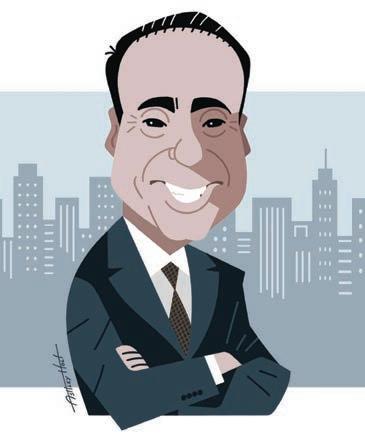
My primary responsibility is to help elect Democrats and do whatever it takes to see that we have as much support for them as possible. A lot of people don’t understand what the state party does. It doesn’t run campaigns. You have the [state] Democratic Senate Campaign Committee and Assembly Campaign Committee and the Democratic Congressional Campaign Committee— those are the lead agencies that oversee the individual campaigns of candidates running for their respective offices. The state party is a coordinating entity, mainly a housekeeping entity, meaning we do the back end and help coordinate between campaigns so resources are used as efficiently as possible. We manage the voter file so that candidates can target the right voters in an effective way, and we raise a lot of money and help distribute that to individual county organizations so that they can build their grassroots operations and their infrastructure. The polling, the messaging, the persuasion strategies, the opposition research—all of that is conducted by the lead agencies or the campaigns themselves.
After New York Democrats underperformed in the midterms, more than 1,000 Democratic lawmakers and state party members signed a letter calling for your ouster; in response, more than 40 county chairs signed a letter expressing their support. What does this say about party power struggles?
That 1,000 figure that you attribute to party leaders and elected officials is not true. There were 1,000 people on that letter, but the actual number of elected officials and party officials was well south of 50. I’ve been Nassau County chair for over 20 years and I’ve been state chair in two different time periods. When you win an election, everybody is ecstatic
and they congratulate the candidates for the greatest race ever run. But when you lose, everybody’s upset and looking for someone to blame. And the first person they look to is the party chair because we are in essence the coach, the manager of the team, and I expect that and I’m used to it. . . . It’s always legitimate to look to the leadership and say, we should have done better, and we all agree on that. But I think we have to look through a lot more if we really want to improve.
As for divisions in the party, they have always been there and they likely will always be there because that’s the nature of the Democratic Party. We have a big tent and we welcome people with all different views along the general philosophy of what Democrats believe in, and that’s building up the working class and helping those who have been left behind.
Ballot proposals intended to improve the state’s redistricting process and make it easier to vote were defeated in 2021.
Do you wish you had campaigned harder for those reforms?
Nobody asks the state chair or the state party whether it’s a good or a bad idea to put a referendum on the ballot in a lowturnout election year. Nobody asked us. They just went and did it, which is their privilege. We don’t control that. What we do is, we support them when they ask for it.
You’ve attributed the loss of seats in New York to higher GOP turnout and Republican fearmongering on bail reform. What is the state party doing to increase Democratic turnout and combat misinformation about bail reform? Democratic turnout in both the 3rd and the 4th congressional districts was about 50%, which is exactly in line with what we always turn out in even, nonpresidential election years. But Republican turnout was through the roof, and more than that, we lost unaffiliated voters. I don’t think turnout cost us these elections; I think it was the persuasion piece. On
DOSSIER
EMPLOYEES 60 full time and year round; up to 1,500 in the summer
ON HIS RÉSUMÉ New York state Democratic Committee chair (2009-12; 2019-present); Nassau County Democratic Committee chair (2001-present); CEO of TLC Family of Camps & Inns; head of the TLC Starfish Foundation; founder of Summer Camp Opportunities Promote Education (SCOPE); founder and chair of Project Heal the Children
GREW UP Forest Hills
RESIDES Laurel Hollow, Nassau County EDUCATION SUNY Oneonta, where he majored in economics and political science, and Northwestern University Law School
BREAKING THE MOLD Jacobs is the first New York state Democratic chair to hold the position twice.
bail reform and crime and the connection between the two, that was exacerbated because the New York media market was magnifying the argument on a daily basis that crime was up because of bail reform and Democrats were to blame. The argument that we made, that bail reform was not to blame for the higher crime rate, was just not resonating with voters because it’s much simpler to say, “Crime is up. Democrats gave us cashless bail, which is putting dangerous criminals back on the street. And that’s the reason you’re all unsafe.”
What are you proudest of having done as chair, and what do you wish you had done differently?
I’m proudest of bringing diversity to Nassau County in terms of electing the first woman county executive, the first and second female district attorneys, electing more people of color to the bench than ever before, and recruiting and electing the first Asian-American of Indian descent to the state Senate. That’s helped broaden the party and made us more representative of our constituents. I wish I were more effective in having an open and positive dialogue with my colleagues on the far left. I have a personality flaw, which is that if I see something I don’t like, I’m going to say it directly and clearly but not in an offensive way. I don’t say it to denigrate anyone or put anybody down. But I should have worked harder to create relationships where my saying those things would have been received a little bit better.■
February 27, 2023 | CraIN’S NeW yOrK buSINeSS | 11
POWER
ASHLEY HOLT
Nominate an up-and-coming professional under 30 years old to join Crain’s 2023 20 in Their 20s list. This group will represent the next generation of leaders and show how their work can improve the lives of all New Yorkers in the years to come.
Nominations Close March 31
No Application Fee CrainsNewYork.com/20in20s
Mayor’s former chief of staff joins SL Green’s casino bid
BY NICK GARBER
Weeks after stepping down as Mayor Eric Adams’ chief of staff, Frank Carone has joined forces with real estate giant SL Green in its bid to open a casino in the heart of Times Square.
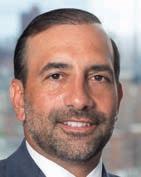
In a statement, Carone said he has been retained by law firm Greenberg Traurig “to help create a diversified community engagement hiring plan as part of the proposal for a Times Square gaming destination.”
Carone, who is legally barred from lobbying City Hall for one year following his end-of-year departure, emphasized that he would not “be acting in a lobbying capacity for this project.”
SL Green, the city’s largest commercial landlord, is partnering with Caesars Entertainment and Jay Z’s Roc Nation entertainment agency. Their plans call for a resort and casino at the 54-story office tower at 1515 Broadway, which includes the Minskoff Theatre, long home to The Lion King

“We are very excited to be working with Frank to ensure that Cae-
sars Palace Times Square maximizes job opportunities for underrepresented communities across all five boroughs of New York City,” SL Green, Roc Nation and Caesars said in a joint statement.
The companies have rolled out a public relations campaign, complete with a coalition of labor unions and businesses supporting the proposal. Other backers include the Actors’ Equity Associa-
tion, a union of theater performers.
The Broadway League, which represents theaters, opposes the plan over concerns that it would worsen Times Square’s congestion.
SL Green and Caesars say their casino would attract more than 7 million new visitors to Times Square, generating $166 million in local retail spending. A “congestion mitigation and security improvement plan” would be included, the companies say.
Politico first reported on Carone’s new role. At the time of his departure from City Hall, Carone—a lawyer and former power broker within the Brooklyn Democratic Party— said he would open a consulting firm.
His arrival adds intrigue to the high-stakes casino licensing process, in which nearly a dozen companies are vying for what is expected to be a single competitive permit for a casino in the five boroughs. Other notable contenders include The Related Cos. and Wynn Resorts, which would construct their casino on the undeveloped western half of Hudson Yards; and Vornado Realty Trust, which is eyeing the site of the soon-to-be-demolished
Hotel Pennsylvania on Eighth Avenue.
The latest high-profile entrant was Bally’s, which recently revealed
February 27, 2023 | CraIN’S NeW yOrK buSINeSS | 13 PROMOTE AND PUBLICIZE YOUR INDUSTRY EVENT NEWS INCREASE ATTENDANCE AT YOUR EVENTS Networking & Educational Events / Seminars & Conferences Fundraisers & Galas / Events of Interest to the Business Community SUBMIT AN EVENT Deb Stein | dstein@crain.com OVER 6 IN 10 READERS BELIEVE CRAIN’S GIVES THEM A COMPETITIVE EDGE CRAIN’S PARTNER
that it had inked a deal to take over a portion of the Trump Organization–owned golf course at Ferry Point in the Bronx. ■
POLITICS
TWITTER
CARONE has been retained by law firm Greenberg Traurig but is legally barred from lobbying City Hall for one year. COSTAR
SL GREEN’S plans call for a resort and casino at the 54-stor y office tower at 1515 Broadway, which includes the Minskoff Theatre, long home to The Lion King
STAY AHEAD OF WHAT’S NEXT IN INDUSTRY NEWS RECOGNIZE TOP ACHIEVERS IN NEW YORK’S PREMIER PUBLICATION Mergers & Acquisitions / Name Changes Business Launches / New Office Locations Funding Announcements / Industry Honors / Anniversaries MAKE AN ANNOUNCEMENT Debora Stein / dstein@crain.com CrainsNewYork.com/COTM 6 IN 10 READERS BELIEVE CRAIN’S GIVES THEM A COMPETITIVE EDGE
IMMIGRATION
Sharp drop in immigration is hampering New York’s pandemic recovery
 BY CARA EISENPRESS AND CAROLINE SPIVACK
BY CARA EISENPRESS AND CAROLINE SPIVACK

If the United States is a nation of immigrants, New York is its capital. Millions of New Yorkers from other countries work at thousands of businesses, speak hundreds of languages and revitalize neighborhoods across the ve boroughs.
at has made it surprising to business leaders when they hear about the 56% decrease in the number of immigrants who’ve arrived in the past three years. at gure, from the state Department of Labor, shows that the net number of new immigrants cratered between 2019 and 2021. Even when arrivals picked up again in late 2021, 30,000 fewer new residents moved to New York from outside the U.S. over the course of that year than had in 2016, according to recent U.S. Census Bureau data analyzed by the Fwd.US think tank.
“During Covid-19, immigration literally stopped,” said economist Neeraj Kaushal, an expert on immigration policy at Columbia University. “ e crunch of that … you’re still feeling now.”




e resulting labor shortage has played out across the economy as a silent headwind to the city’s plodding recovery. Restaurants, which historically have helped provide employment for immigrants, have been severely impacted. Tech rms, known for their enthusiasm for foreign workers, are being more cautious about employees enduring the long, expensive visa application process even as they view New York as a business hub. At the same time, the more than 30,000 migrants arriving each month from the southern border are prohibited from obtaining legal work authorization.
Immigration is a crucial economic and population engine for the city, bringing willing workers to the labor force and high-skilled inventors to help shape the future. But it is also something even more fundamental: a part of New York City’s character, literally written on its “golden door,” the Statue of Liberty.
See IMMIGRANTS on page 16

KATIE
Helping immigrants attain English pro ciency is a winwin for the city

PAGE 18
Immigration reform and training can help ll the construction jobs pipeline PAGE 18
Update permit rules so asylum seekers can get to work
PAGE 19
FRANK
Boosting the business climate can help Latin America and the city
PAGE 19
FEBRUARY 27, 2023 | CRAIN’S NEW YORK BUSINESS | 15
BROWN
INSIDE
ANNE MARIE SOWDER
MURAD AWAWDEH
GARCIA
BUCK ENNIS
The 56% decrease in new arrivals is bad for business in a city that depends on foreign workers
ZARTA enrolled at NYU as a lm major more than a decade ago and returned to his home country of Columbia to work on productions. Now he’s back in New York to complete a graduate degree.
IMMIGRATION IMMIGRANTS
FROM PAGE 15
A few data points show what that means for the city.
● Immigration matters a lot more in New York City than in the rest of the country. Although the 56% net drop is in line with the rest of the U.S., in New York City, 38% of the population is foreign-born, compared with 14% nationwide.
● Slower immigration could stunt the city’s population growth. Without international immigrants, more New Yorkers leave or die than move here or are born each year. In the 12 months that ended in July 2021, the state had a net population loss of about 320,000, in part because only about 18,000 immigrants moved to the state. In the 12 months that ended in July 2022, population loss was about 180,000, with approximately 78,000 new immigrants helping to balance out the domestic migration, according to Census Bureau data analyzed by the Empire Center think tank.
● Monthly new arrivals to the U.S. hit prepandemic levels in August 2021. Before 2020, the number of new lawful permanent residents moving to the U.S. each month uctuated
● A backlog to process visas has caused record-long wait times and slowed immigration to New York. Ten years ago a work permit application for an international student was considered a low lift and processed in about a month. It now takes more than four months, according to the Manhattan Institute for Policy Research, a conservative think tank. Similarly, an application to obtain permanent residency for a highskilled immigrant took roughly four months in 2012; now it takes nearly 11 months. e Covid-19 pandemic has further slowed processing times. And the applications are pricey and expected to increase in cost. U.S. Citizenship and Immigration Services, the federal agency that oversees legal immigration, aims to raise costs for several applications. Currently, applying for an H-1B visa costs $1,700 to $8,000, depending on attorney fees, employer speci cations and other potential fees.
● The return of international students suggests immigration is back on track. In the last school year, 123,666 international students studied in New York, 10% fewer than in the 2019–2020 academic year, according to Open Doors, which tracks international enrollment. Foreign enrollment at New York University was back at its 2019 level of more than 21,000 by September 2021, the highest in the nation. More general data about 2021 is due to be released in the next two months.
Help wanted
JOB CHANGE FROM DEC. ’19 TO DEC. ’21

-6.5% CONSTRUCTION

-12.8% ACCOMMODATION and food services
-9.2% TRANSPORTATION and utilities

+15.8% HOME HEALTH CARE services
NGO, chef and owner of Di

in Greenpoint, is facing a labor crunch for a number of positions that used to be lled easily.

between about 80,000 and 90,000. Around 10% of new international immigrants end up in New York City.
● Labor force participation among immigrants hit a two-decade low. In 2019 the noncitizen population accounted for 19% of New York City’s labor force. By 2021 the share had dropped to 17%, according to an analysis by state Comptroller omas DiNapoli—the lowest in 20 years. Nationwide, the drop was much smaller: from 8.1% to 7.8%.
In early 2020, applications fell o at Prime Care, a home health care agency in Manhattan. Despite a constant need for health aides, prospective hires have not picked up.

Few people are applying for work, said Karen Lewicki, administrative assistant at Prime Care, which is owned by her husband, Richard. “For some reason,” she said, “the recruitment is not out there. I don’t know why. We advertise everywhere, and nobody seems to contact us.”
Lewicki, who declined to share precisely how many health aides Prime Care em-
ploys, said a sizable portion of the company’s aides come from immigrant communities. She and other employers in the fast-growing home health care industry said they could not conclude that their hiring woes came solely from the immigration slowdown. Some said the higher demand for workers now allows aides to be choosier. Other employers said their emphasis on hiring more experienced workers, who tend to be older, made them question just how much the dip in immigration factors into their current labor troubles.
Health care is one of the industries in
which an outsize percentage of workers are foreign-born, according to gures from a 2013 study—the most recent available— by the Department of City Planning. Nearly half of health care and wholesale and retail workers were born elsewhere. Up to 60% of workers in the transportation, warehousing, manufacturing, accommodations and food service industries are foreign-born. Construction has the highest rate of all: 67% of employed residents were born outside the U.S.
16 | CRAIN’S NEW YORK BUSINESS | FEBRUARY 27, 2023
THE COST OF LIVING IN NEW YORK IS HIGH ENOUGH TO MAKE FOREIGNERS THINK TWICE BEFORE MOVING
An Di
PLATFORM BASE is a digital lock startup connected to the Korea International Trade Association.
MIGNOT (left) of Index Ventures advises foreign founders like Wehmeyer (right) of Taktile about marketing products in the U.S.
In health care and social assistance, the average annual wage in 2021 was about $56,000, according to the Department of Labor’s quarterly census of employment and wages; in residential construction, often the entry point for workers, pay was around $55,000.
Missing people
New York City’s labor force is down 300,000 people since 2020, according to an analysis by economist James Parrott. The missing workers are a drain on the recovery, yet “we don’t really have good information on who the missing people are,” Parrott said.
Some could be immigrants who did not arrive, Federal Reserve Chair Jerome Powell said during a November event at the Brookings Institution, crediting the lack of newcomers for about one-third of the U.S. economy’s 3.5 million missing workers.
Dennis Ngo, chef and owner at Di An Di in Greenpoint, Brooklyn, said there is a crunch in both hiring and retaining prep staff, bar backs, porters and dishwashers.

Employees at restaurants and bars made about $27,000 to $42,000 in 2021, depending on whether they worked at sit-down or quick-service spots.
“The positions that normally had been easily filled in the past were generally in support positions,” Ngo said. “It seems more difficult just getting people to apply to them.”
He said the usual hiring channels, including word
of mouth and online postings, are bringing in few applicants for support workers, who are often foreign-born.
One bar back—a bartender’s assistant—recently returned to Ecuador because health care there is more affordable, Ngo said.
It’s difficult to measure the effects the limited immigration has had on business, but it has been inarguably bad.
“Can’t get help,” said Martin Kamiel, executive director at David York Agency, a home health care outfit that provides in-home and elder-care services. “Can’t get cases. Can’t fill the cases.”
Wish I were there
The U.S. is a beacon for individuals looking for opportunity or fleeing problems, and businesses around the world want to come to New York to make money.
“Every enterprise depends on being in the U.S. market,” said PhilJae Park, director of the startup global connect department at the Korea International Trade Association.
Park is trying to introduce South Korean startups to potential U.S. customers through a partnership with the Brooklyn Chamber of Commerce. The partnership has brought new sanitation-related tech products to Brooklyn, where small businesses such as Sahadi’s, a family-owned gourmet grocery, can test them. (Sahadi’s is trying out a new composting machine.)
The Korean business owners, however, are staying in Seoul for the moment. As badly as they might like to be here, it’s just not cost-effective to bring founders to this country before their products have wide adoption, Park said.
Across industries, entrepreneurs and investors say they might set up shop in New York if they could. But visa quotas have not changed in decades, and the pandemic years have brought long processing times that slowed applications. Also, the cost of living in New York is high enough to make foreigners think twice before moving.
Technology leaders have long clamored for higher caps on H-1B visas, meant for workers with special skills. While Donald Trump was president, there was a high rate of denials for H-1Bs, but more were approved last year under President Joe Biden. Then Biden in January introduced a new obstacle: He proposed increasing the price of a visa to $1,595 from $470.
That could burden employers that already are cutting compensation costs and looking for workers who do not need sponsorship.
Demand remains
In 2021 a large number of employment-related visas were issued because so many family visas went unused the year before. That they were grabbed up is potential evidence that the demand goes beyond the U.S. cap.
Every time Andres Zarta works a shift at the NYU Tandon admissions office, he remembers why he and his classmates want to be here, he said. Zarta, who is from Bogota, Colombia, first enrolled at NYU as an undergraduate more than a decade ago. He studied film, then went back home to work on productions.
It didn’t take long, he said, before he wanted to return to New York.
“When you are back in your home county—at least that was my experience—you think, I want to get my foot in the door,” he said. “Then you get the foot in the door, and you change and grow to the point where you don’t see yourself going back to the place where you started.”
While back in Bogota, he did the NYU coursework needed to apply to a master’s program in computer science at Tandon. Although he is now married to an American— which for him eases his way into the U.S. workforce—his classmates from China, India and Jamaica often arrive on optional practical training visas, OPTs, which allow for three years of work after graduation.
Both NYU Tandon and Cornell Tech are mostly attend-
ed by foreigners. At NYU’s combined New York City campuses, 40% of students are international. At Tandon, onethird of the students are from China, and a quarter hail from India. Deans of both schools said graduates are almost always offered employer sponsorship when their OPTs run out.
Yet for each high-skilled immigrant working here, there are several more who conclude that going to New York is impossible.
New York is “depriving itself of an insane amount of talent clamoring to move here and build in the high-tech space,” said Martin Mignot, partner at Index Ventures, a London-based venture capital firm that opened an office in the Meatpacking District in the fall.
Mignot said he believes New York City is the best U.S. jumping-off point for foreign startups. Its time zone makes work with Europe easy, he said, and its diversity of industries and funding sources lets it compete with San Francisco. Even so, not every foreign startup employee who could move here will.
Mignot has a playbook for foreign teams. Once a startup in his portfolio has shaped its idea and built its core team, he advises its founders to look to New York to market and sell its products or services, while research, product and engineering teams usually hold back. That strategy is passed on to founders including Maik Wehmeyer of Taktile whose company operates in Berlin, London and New York City.
“If the product is working and you have the right pricing, it can bring you a lot of money,” he said.
To make money, you need account executives, and account executives need six months to a year to ramp up before clients or consumers sign contracts, he said. The cost is why the Korean founders sent their products to test the market before investing in their own presence here and why Mignot’s portfolio company, Incident IO, a software issue management platform, sent only its founder here from London in January instead of a larger team.
“You can’t do that on a shoestring,” Mignot said.
Opening the gates

As city leaders await numbers coming out in March and April that are expected to reveal more recent levels of immigration, they have been dealing with what Kaushal, the immigration economist, called “a strange situation.”
“While there are a lot of migrants waiting at the border,” she said, “we also have a scarcity of workers.”
The federal government sometimes has allowed for faster processing of asylum seekers, but there has been no movement to do so for the recent round of migrants.
Mayor Eric Adams and Gov. Kathy Hochul have accounted for the multimillion-dollar cost of sheltering and providing for asylum seekers without the ability to expedite asylum applications or create a temporary right to work.
Because immigrants need to work to stay in this country, they are overrepresented in the labor force, and allowing recent arrivals to get to work seems like a natural solution to some stakeholders.
“Whenever I meet migrants, especially those that have recently arrived, they get a job,” said Kaushal. “I met a woman the other day. She got a job in, like, six days’ time. She was in the city for only six days and in the country for only two weeks, and she already was working.”
To other observers, the question is larger than simply filling the labor force. Immigrants who have jobs often want and need better jobs. Programs that include English-language training as a means of career advancement are popular. Amazon has such an approach, Career Choice.
“These types of programs represent the variety of opportunities available to our diverse employee population and help address some of the challenges that our employees face,” said Carley Graham Garcia, head of community affairs at Amazon New York.
Last year 60,000 Amazon workers signed up for Career Choice—more than three times the participation in 2021, she said.
Another refrain is that New York is a city that welcomes immigrants, no matter what. Just as many American-born New Yorkers struggle to find good jobs and affordable housing, so do immigrants.
“I think the solution to attracting talent to our state is to make it a livable one,” said state Sen. Jessica Ramos, who chairs the Senate’s labor committee. Her district in Queens has absorbed a great number of recent migrants.
They are due a better welcome, Ramos said.
“Only immigrants,” she said, “desperate for greater opportunity and options for work, will leave their homes to subject themselves to terrible working conditions.” ■
February 27, 2023 | CraIN’S NeW yOrK buSINeSS | 17
IMMIGRATION PHOTOS BUCK ENNIS
HELPING IMMIGRANTS ATTAIN ENGLISH PROFICIENCY IS A WIN-WIN FOR NEW YORK CITY
NEW YORK IS A CITY OF IMMIGRANTS, but we have a long way to go before we’re a city of immigrant inclusion. Our 3.1 million immigrants are chronically unemployed and underemployed, more likely to live in poverty despite working more hours and participating in the workforce at higher rates than their U.S.-born peers.
Such stark inequity isn’t unique to New York. Yet with 40% of New Yorkers born outside the U.S., there are few places as dependent on the economic mobility of immigrants, refugees and asylees.
It’s past time to build systems that set immigrants up for success instead of struggle. A fundamental step is to connect New York’s newcomers with a central skill that can energize their careers: English proficiency.
There are more than 1 million adult English learners in the local workforce; yet in New York and across the country, we’re serving just 4% of them. Across the five boroughs, accessing English can mean jockeying for a slot in an overbooked in-person class, cobbling together child care and making multiple bus transfers—all to attend a course that likely relies on outdated instructional practices such as grammar drills, scripted dialogue and preparation for academic pathways and standardized tests.
The status quo drives poor learning outcomes along with inequality and labor shortages. Adults who are still learning English earn 40% less than their peers who speak the language proficiently. And language barriers keep workers with in-demand education, training and experience out of the workforce. It’s an unacceptable reality in a city grappling with a 300,000-person drop in its labor force.
A city with a 400-year history of immigration can—and must—do better. Research consistently tells us that adult English learners benefit from personalized, career-aligned, on-demand instruction. New York City must find the capacity to teach English as the vocational skill that it is and to deliver effective instruction at the scale required by our massive workforce.
Local employers are well positioned to deliver on both fronts.
We know the programs work. At organizations offering career-aligned English upskilling, 92% of learners improved their English proficiency, and 80% reported achieving career goals including pay raises and promotions. Outside of the workplace, gains in English proficiency bolster tax revenues, job creation and civic engagement. It’s a win-win for New York.
By connecting more immigrants with on-ramps to job training and pathways to economic mobility, New York’s employers can challenge the notion that starting over in a new country automatically means beginning at the bottom. Scaling science-based solutions that promote English proficiency is the place to start. ■
Katie Brown founded EnGen, a certified B Corp. that delivers personalized, contextualized, mobile-first English-language upskilling to immigrants, refugees and other speakers of other languages.


OP-ED IMMIGRATION REFORM, TRAINING CAN FILL PIPELINE FOR GOODPAYING CONSTRUCTION JOBS


THE CONSTRUCTION INDUSTRY is being starved of its most important resource: labor. That includes the professionalized class of project managers as well as non-trade technical workers in inspections, testing and surveying. With an immigrant-dominated workforce, the prolonged reduction in immigration has obvious impacts on the labor market and not just in its low-wage trades and informal sectors.
Construction firms expect an increased workload in the coming year. Even though interest rates and material-price fluctuations still cause concern, more contractors are reporting that labor shortages will be their biggest problem this year, according to surveys and data from two industry groups, the Associated General Contractors of America and Associated Builders and Contractors.
In fact, the number of job openings is on the rise, while new hires have continued dropping since 2020. As industry stakeholders think about how to fill jobs in our industry, they point to the need for immigration reform, as the relative size of the American workforce shrinks compared with the country’s overall population.
In New York City we feel the tug in the talent pipeline. At CUNY City Tech, where roughly half of our students are born outside of the U.S., students in my construction engineering technology senior class were all working before graduation. Salary and poaching were commonly discussed, as companies attempted to engage workers with both significant experience and formal education. Demand for trade employment, which makes up three-fifths of the construction workforce, according to the Bureau of Labor Statistics, remains strong and highly valued.
We are talking about good jobs. In New York state, three of five of the most common construction occupations pay more than the state’s median pay, and 100% of New York firms surveyed by the contractors’ industry group reported unfilled trade job openings.
Notably, immigration status significantly impacts workers’ earning potential in the trades, but union membership and other credentials go a long way to addressing the wage gaps. Public-sector recruitment of students with two- or four-year degrees continues at pace, but private-sector direct recruitment has expanded dramatically, including companies seeking entry-level employees and interns to fill project management, field supervision and engineering roles.
Industry chatter reflects a labor drought in mid- and senior-level roles, with openings always filled immediately. My attention is on entry- and internship-level recruitment, which is also robust. In construction, training takes a while. Novices in the industry do not pull their weight for quite some time. The strong internship programming I see now suggests optimism regarding projects 12 to 18 months down the road.
For any of the hundreds of thousands of people entering the U.S. construction workforce each year, the difference between an exploitative and unsafe situation and one that represents opportunity for meaningful work and personal advancement might be the acquisition of recognized credentials. The known disadvantages to immigrant workers, such as safety and wage gaps, need not be permanent. All workers in the construction industry stand to benefit from the opportunities available now for those with formal credentials such as skill certifications, union membership and college degrees.
Incorporation of skilled workers into the workforce is immediately beneficial to companies with job openings.
When one of my students lands a job, I tend to get a call.
“I love [so-and-so],” the hiring manager says. “Send me more.” ■
18 | CRAIN’S NEW YORK BUSINESS | FEBRUARY 27, 2023 OP-ED
KATIE BROWN
GETTY
Anne Marie Sowder is an assistant professor of construction management at City Tech, CUNY’s New York City College of Technology.
ANNE MARIE SOWDER
IMMIGRATION
LET’S REFORM PERMIT RULES SO ASYLUM SEEKERS CAN GET TO WORK

IMMIGRANTS HAVE ALWAYS been the backbone of New York’s workforce and economy. Serving as farmworkers, teachers and essential workers during the pandemic and beyond, immigrants have been a constant, integral force throughout New York’s history. As our state grapples with record-high job vacancies and out-migration, it is immigrants, refugees and asylum seekers who offer the best chance for New York’s economic growth and recovery.
In the past year New York has welcomed asylum seekers with open arms as the migrants pursue a better life for themselves and their families. They hope to achieve the American dream, securing good jobs to build a more prosperous future. But there are significant hurdles that prevent recent arrivals from working and integrating into our communities.
The first step to ensuring that asylum seekers are able to contribute to our local economy is by expediting work permits so that they are able to provide for themselves and their families as soon as they arrive in New York. To get a work permit, recent arrivals must first file an asylum application. Then they wait at least 180 days before they are eligible to receive a work permit.
That is an unnecessary amount of time to wait, and it serves only to jeopardize people’s financial status and livelihood. Congress must rectify the blatant injustice by expediting work permits for asylum seekers. New arrivals then could build a life in New York while contributing to our economy.
The accelerated process works: When certain refugees arrive in our country under humanitarian parole, they are immediately allowed to secure employment. People’s survival depends on their ability to obtain a job. There’s no reason why asylum seekers shouldn’t be granted the same opportunities as those who arrive under humanitarian parole.
To obtain a work permit, asylum seekers now must file complicated legal paperwork, and severe court backlogs have made the process even more difficult.

The asylum seekers have traveled thousands of miles to a country where they don’t speak the language. By investing in legal services, New York state can ensure that the asylum seekers are able to contribute to our economy.
As New York continues to deal with the Covid-19 pandemic, recent asylum seekers stand ready to be a part of the workforce and New York’s recovery. But every step of the way, they are met with barriers preventing them from building the life they want and deserve. Our leaders across all levels of government have an obligation to reform the process. Reforms would benefit the asylum seekers and New York’s economy.
New York has always depended on immigrants, and the interrelationship will continue. An investment in our recent arrivals would be an investment in New York’s prosperity. ■
LET’S BOOST THE BUSINESS CLIMATE IN LATIN AMERICA AND THE CITY
THE UNITED STATES—and New York City in particular—has historically been a haven for immigrants, especially ones with an entrepreneurial bent. The trend continues to this day, with an even more diverse group of people opening small businesses in pursuit of the American dream.
I have devoted most of my life to advocacy for Hispanic small businesses, leading the local Hispanic chamber of commerce and going on to become head of a national advocacy group. My grandfather, who moved here from Puerto Rico, vividly showed me the way by opening a successful bodega and then founding the first association of bodegas in New York City. I got to see how the entrepreneurial spirit could lift immigrants—and their children and grandchildren—to a better life.
What I have learned in a life advocating for minority businesses was how my own family’s experience was mirrored by a wide range of diverse immigrant groups—each gravitating toward different business opportunities. The Puerto Rican bodega became a magnet for others. It transformed into the Dominican bodega. And then the Yemeni bodega joined in the immigrant chorus. Those ethnic groups came to New York to improve their lives.
Many Dominican bodega owners bootstrapped their success and eventually took over much of the New York City supermarket business, especially in poor neighborhoods. They were not alone, as Chinese and Korean grocers sprouted up, catering to their own communities’ needs while enticing other New Yorkers eager for a taste of those cultures.

The same is true for African food distributors and retailers, who have started to gain traction in New York. And we can’t forget the contribution of the Koreans who invented the green grocer/salad bar retail niche, often in neighborhoods where fresh fruits and vegetables were hard to find.
The food business is attractive to immigrants, but they also have branched out to other sectors. The Vietnamese dominate the nail salon business, for instance, while Sikhs and Haitians are found disproportionately among newsstand operators and taxi medallion owners.
As I grew into becoming a more influential small-business and immigrant leader, I began to realize that many strivers were not being afforded the same opportunities that majority-owned businesses were being given when it came to government procurement. So I helped lead the fight to expand minority/ immigrant business access to government contracts—work that has made headway but remains unfinished.

My decades-long dedication to advocacy has led me to my current change of direction: right into entrepreneurship of my own as the founder of the Hispanic Buying Group. It’s a minority-owned organization that identifies producers in
Latin America, especially from economically and socially distressed areas, and creates business trade opportunities in partnership with U.S.-based minority chambers of commerce and minority buying groups.
Our coalition, made up of representatives from the most important Hispanic trade groups in New York, is welcoming the National Association of First Ladies, a Colombian group of wives and partners that promotes economic development for women displaced by conflict and war.
The vision of the coalition is to create a trade bridge between Latin America and the United States, to give opportunities to minority-owned businesses in the United States while creating economic development opportunities in Latin America.
If we are successful, we will—by creating business opportunities—help to tamp down the push of migrants from impoverished countries into the United States. Strengthening the indigenous Latin American business climate would be a win for all immigrants as well as for those who choose to stay behind and build their own success story at home. ■
Frank Garcia is the former chairman of the National Association of Latino State Chambers and founder of the Hispanic Buying Group.
February 27, 2023 | CraIN’S NeW yOrK buSINeSS | 19
FRANK GARCIA
OP-ED
Murad Awawdeh is executive director of the New York Immigration Coalition.
OP-ED
ISTOCK IMMIGRATION ISTOCK
MURAD AWAWDEH




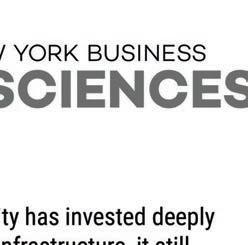



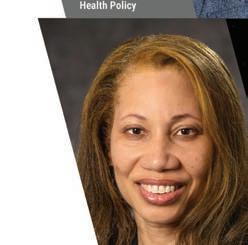



Notice of Qualification of UNISON RENEWABLES US, LLC



Appl. for Auth. filed with Secy. of State of NY (SSNY) on 01/12/23. Office location: NY County. LLC formed in Delaware (DE) on 11/16/21. SSNY designated as agent of LLC upon whom process against it may be served. SSNY shall mail process to c/o Corporation Service Co., 80 State St., Albany, NY 12207-2543. DE addr. of LLC: 251 Little Falls Dr., Wilmington, DE 19808. Cert. of Form. filed with Secy. of State, John G. Townsend Bldg., 401 Federal St., Ste. 4, Dover, DE 19901.
Purpose: Any lawful activity.
Notice of Formation of InZone Logistics LLC
Arts. of Org. filed with Secy. of State of NY (SSNY) on 8/25/17. Office location: NY County. SSNY designated as agent of LLC upon whom process against it may be served. SSNY shall mail process to 718 3rd Ave, Bklyn, NY 11232


Purpose: Any lawful activity
PUBLIC & LEGAL NOTICES
Notice of Formation of Limited Liability Company (LLC). NAME: SIX SIGMA CAPITAL LLC





- Articles of Organization filed with the Secretary of State of New York (SSNY) on 05/27/2022. Office location: NEW YORK County. SSNY shall mail a copy of process to: The LLC, 135 W 36TH ST FL 19, NEW YORK NY 10018.
Purpose: Any lawful purpose.
Notice of formation of Limited Liability Company. Name: EC Lower Hudson 2 LLC
(“LLC”). Articles of Organization filed with the Secretary of State of the State of New York (“SSNY”) on December 23, 2022. NY office location: New York County. The SSNY has been designated as agent of the LLC upon whom process against it may be served. The SSNY shall mail a copy of any process to EC Lower Hudson 2 LLC, c/o Exact Capital Group LLC, 150 East 52nd St., 14th Floor, New York, NY 10022.
Purpose/character of LLC is to engage in any lawful act or activity.
Notice of Formation of Limited Liability Company (LLC). NAME: HUX FOUNDATION LLC
-Articles of Organization filed with the Secretary of State of New York (SSNY) on 04/12/2022. Office location: NEW YORK County. SSNY shall mail a copy of process to: The LLC, 135 W 36TH ST FL 19, NEW YORK NY 10018.
Purpose: Any lawful purpose.
BRAVE TOTS LLC.Filed with SSNY on 09/28/22. Office: Bronx County. SSNY designated as agent for process & shall mail copy to: 2881 E 197th Street, 3rd Floor, Bronx, NY 10461.
Purpose: Any lawful.
Notice of Formation of Limited Liability Company (LLC). NAME: FISCAL CAPITAL LLC

- Articles of Organization filed with the Secretary of State of New York (SSNY) on 6/02/2022. Office location: NEW YORK County. SSNY shall mail a copy of process to: The LLC, 135 W 36TH ST FL 19, NEW YORK NY 10018.
Purpose: Any lawful purpose.
REQUEST FOR PROPOSAL
The Wildlife Conservation Society: wcs.org, is soliciting a Request for Proposal for Travel Management Services from qualified TMCs. To request a copy of the solicitation, please submit your request to Nicole Nufer globalpurchasing@wcs.org
Key Dates: Solicitation Date- 2-21-2023
RFI no later than 3-6-2023
Proposals Due 3-14-2023 no later than 5:00 p.m. EST (GMT-5) to email globalpurchasing@wcs.org

POSITION AVAILABLE
Senior Software Engineer positions with WarnerMedia Services, LLC in New York, NY. Design, develop, implement, test, document & deliver large-scale, multi-tiered, distributed or embedded SW applications, tools, systems & services using Object Oriented programming, distributed or embedded programming, relational databases &/or related technologies in Linux, Unix, or related sophisticated platform or operating system in an Agile environment. Position based in New York, NY. May telecommute from anywhere in the U.S. Salary range is $130,000/year - $195,000/year, depending upon qualifications. Email resume to GMRI@warnerbros.com. Ref: 6376936SSE2.
Get

Suzanne Janik at 313-446-0455 or email: sjanik@crain.com Advertising Section FEBRUARY 27, 2023 | CRAIN’S NEW YORK BUSINESS | 21
CLASSIFIEDS Contact
your message in front of New York’s in uential business community with Crain’s New York Business - Classi ed Ads
CRAIN’S NEW YORK Crain’s is now in the app store. Tap into New York. Contact Suzanne Janik at 313-446-0455 or email: sjanik@crain.com
FOUNDERS
Di erence began). She joined MetLife’s insurance tech accelerator and gave a Ted Talk while she had a negative account balance and was behind on “at least” two bills. She showed investors that a lack of money wasn’t an obstacle in making her vision visible.
Maya Hardigan, on the other hand, said she thinks today’s fundraising environment is all about money and planning. “Assume you need to show evidence of being a stage ahead of where you are,” said the founder of Mae, a Clinton Hill–based maternal health platform. “ e evidence we’re needing to show to make investors con dent and de-risk the raise is more in line with what I understood [to be] a Series A level of progress.”
Hardigan started fundraising for her company in 2020. Her success came at a time when connections reigned supreme. She joined the Founders Factory incubator—a collaborative program designed to help entrepreneurs succeed—the same year she started fundraising. e incubator guided her on her pitch deck and ran tests to gauge market
WISDOM and Bright created Health in Her Hue to connect women of color to culturally competent providers.
interest in her idea. It represented an “easy pathway to getting plugged in with women’s health investors,” she said. e pathway paid o : Mae secured a $1.3 million preseed round in the fall of 2021.
Dating strategy anks to their experience, Eddwina Bright and Ashlee Wisdom o er advice that sounds like a dating strategy: Find investors who will be partners.
Look for people who “see your background and credentials as a net bene t but also your gaps,” Bright
BRIGHT says it was crucial for her and Wisdom to nd investors who were focused on health equity.
said, adding that she means investors who are “able to support you in a way that drives fast growth.”
Bright and Wisdom created Health in Her Hue to connect women of color to culturally competent providers, and started raising a preseed round in 2020. ey tapped into pent-up demand: 34,000 people logged on to the platform within two weeks of its launch.


From there, it was about nding the right investors. It was crucial to them to get their “napkin” in front of female investors and investors of color who were focused on health
WALTON was able to raise $4.2 million within 90 days of beginning fundraising for Expectful’s seed round.
care and health equity, they said. Research led them to pitch Pipeline Angels, a network of female and nonbinary investors, as well as the BLXVC network. Once they found potential investors, they said, they made sure their prospective partners weren’t just full of hot air.
When Nathalie Walton co-founded Expectful, a health and wellness platform for expecting and new parents, she anticipated a lot of nos. So, she said, she cast a wide net when pitching investors. She also added that the process was a lot like dating. “You’re progressively sharing more
details about one another,” Walton said, “and then cultivating a deeper understanding of who the investor is. And then the same is happening on the investor side.”
For founders who are courting investors, she said, it’s important to look for ones already supporting founders of color and women and who understand the biases in the industry. She said she joined the Founders Factory to accelerate opportunities for mentorship, capital and connections.

Within 90 days of starting to fundraise for Expectful’s seed round after joining as a late-stage co-founder in 2020, Walton had secured $4.2 million. Last month the company was acquired by Babylist, a California-based baby registry company, for an undisclosed amount.
Arthur cited a need for a tolerance for rejection, noting that even if a founder gets an idea in front of the right people, there’s no guarantee they’ll bite. Investors “don’t have the risk tolerance that entrepreneurs have,” she said. “And that’s what people don’t understand. ey get kind of bundled into this hero worship and startup culture, but [investors] are extremely low-risk people. It’s not an easy yes. Try not to take it personally.” ■
budget negotiations over how to fund the transportation system, which everyone agrees is crucial to the region’s overall economic vitality but for which few are willing to be on the hook.
Hochul is seeking to raise the payroll mobility tax to 0.5% from 0.34% for employers within the authority’s district, which includes the city, Long Island and the Hudson Valley. e levy applies to businesses that are required to withhold state income taxes for wages and whose payroll expenses exceed $312,500 in a quarter.
Democratic state Sens. James Skou s, Monica Martinez and Michelle Hinchey, along with their Republican colleague Rob Rolison, penned a letter released this week to Senate Majority Leader Andrea Stewart-Cousins, urging her to exempt their counties. ey argue that ve-borough businesses, with access to the subway and buses, receive the full bene ts of the MTA’s services that suburban districts do not.
“Given the existing value gap outside the city (e.g., there are no subways and few MTA-operated buses),” the letter reads, “and the very fact that businesses in the city are the primary business bene ciaries of the system—riders take the MTA to get to work in New York City; riders generally do not take the MTA to get to work outside New York City— exempting non–New York City from the increase associated with this already-unjust tax is the appropriate response.”
Suburban frustrations
Skou s, who represents parts of Orange County, insists that it’s not the suburbs’ responsibility to bail out the MTA—or, as he calls it, “the black hole of an agency.”
“Why would businesses be taxed
outside of New York City if their employees are not going to be using the MTA to get to that workplace?” Skou s said in an interview, noting that he’d rather see the MTA focus on greater e ciencies and for the city to kick in more money. “ e proposed increase exacerbates the absurdity of this tax if you’re one of the suburban counties.”
Rolison, who represents parts of Dutchess and Orange counties and is a former mayor of Poughkeepsie, said he has heard complaints from employers in his district about the limited rail service. ey also continue to grapple with in ation, supply-chain struggles and labor issues.
“At the end of this process we hope there is a more fair way to fund this system, which we know we need and need to fund,” Rolison told Crain’s. “It’s another mandate, right? So a lot of people just have a general skepticism of the state government.”
e tax was rst passed in 2009 and was met with a similar outcry from the counties on the outskirts of the MTA’s service area.
MTA Chief Executive Janno Lieber has defended the proposed payroll tax increase as “incremental.”
e MTA’s transit networks help drive billions of dollars in annual economic activity for the region, he noted.
Much of the agency’s revenue historically has come from fares. A slower-than-expected ridership return, due to changes in commuting patterns during the Covid-19 pandemic, has left the MTA with a $600 million budget de cit to ll this year and with $1.2 billion needed next year.
Hochul, who repeatedly has described the MTA as the “lifeblood” of the region, has been vocal about her desire to revitalize the transportation authority’s scal health.
e governor might nd Democrats more willing to go along with her plans after November’s election losses, said Democratic political
consultant Evan Stavisky.
“As the Democratic Party has performed worse in suburban communities, it means that on Long Island and in the Hudson Valley there are fewer Democrats who can say no,” Stavisky said. “Any changes are going to be driven by Democratic lawmakers, and there are fewer and fewer Democratic lawmakers from the areas that are underserved by the MTA.”
Economic impact
An increase to the payroll mobility tax is one of multiple proposals Hochul’s budget put forward to fund the MTA. Among the plan is a measure to divert part of the $1.5 billion in licensing fees for up to three planned downstate casinos, with between $462 million and $826 million in annual tax revenue going to the transportation authority once the venues are up and running.
“ e governor has put forward a rational and thoughtful approach to addressing this de cit and simply saying it isn’t the right approach isn’t going to solve the problem,” said Kate Slevin, the executive vice president of the Regional Plan Association.
“ e state and city have a role to play and businesses do as well,” Slevin added. “It’s everyone’s
shared responsibility to ensure that our transit system is functional and reliable and that it lets workers get to and from their jobs.”
Long Island business groups argue that employers are rapidly approaching a breaking point, even though they are also beginning to reap the bene ts of the $11.1 billion East Side Access project which saves time for Long Island commuters and allows for reverse commuting.
“ e perception that Long Islanders have the means to dig ever deeper for yet another tax increase is not only profoundly wrong,” said Kyle Strober, executive director for an Association for a Better Long Island, “but will place a dagger in a regional economy already ghting to attract and retain employers, particularly large employers with high-paying jobs.”
Matt Cohen, president and CEO of the Long Island Association echoed those frustrations.
“I wake up and go to sleep everyday concerned about businesses potentially leaving New York state and Long Island,” said Cohen, who noted that local businesses in multiple sectors have expressed worry about what the proposed tax increase could mean for their operations.
“We have to be cognizant that we are a high-cost region and we need to be doing whatever we can to make sure businesses want to stay here and can a ord to stay here,” he added.
Political juggling act
Some city lawmakers argue that the proposed tax increase actually does not go far enough. Assembly
member Zohran Mamdani, who along with a coalition of progressive legislators have introduced a package of eight bills to fund and improve mass transit known as Fix e MTA, says the state should look instead to raising the corporation tax.
“I think the ways in which we pay for [the MTA] should come from the New Yorkers who can most a ord to pay for it,” said Mamdani. “ is is the transit system that without which their entire business model would come crumbling down.”

At a Wednesday rally transportation advocates, labor leaders and progressive lawmakers, including Mamdani, called on Hochul to beef up her budget commitment to go beyond a scal rescue to include funds for improved service.
How the state Legislature juggles the region’s needs in paying for the MTA will become clearer when the state Senate and Assembly release their respective one-house budgets in the coming weeks.
Assembly member Kenneth Zebrowski, who oversees the MTA as chair of the Assembly’s Committee on Corporations, Authorities and Commissions and who represents Rockland County, described his view of the tax increase as “mixed and complicated” but that Hochul’s budget proposal could have been much more cumbersome.
Zebrowski’s worst-case scenario would be a reinstatement of the commuter tax—which he emphasized is not currently on the table— on those traveling to New York City for work, which was repealed in 1999 by Gov. George Pataki.
“I think we need to do the best we can to balance; we need to come up with additional revenue that makes sense and is as minimally onerous on New Yorkers and New York businesses,” Zebrowski said. “But I’ve been in the legislature for a while now, and if there is no payroll tax [increase], I want to make sure that the alternative isn’t something more onerous.” ■
22 | CRAIN’S NEW YORK BUSINESS | FEBRUARY 27, 2023
FROM PAGE
3 ELAINE NGUYEN
TAX FROM PAGE 1
METRO-NORTH brings commuters back and forth from New York City’s suburbs.
PATRICK CASHIN/MTA
Offering support to mental health care providers
BY CARA EISENPRESS
Alma was supposed to be a WeWork for therapists and their patients.
Founder Harry Ritter wanted to give solo mental health practitioners some of the business support enjoyed by medical professionals who work for large health care systems, such as help with billing and note-taking, as well as a listing on Alma’s public therapist marketplace.
But in 2018 what early members of the startup said they wanted most of all was a nice room where they could see clients. Membership in Alma included the ability to purchase recurring or hourly sessions at the company’s Flatiron hub in rooms designed to be calming and attractive, with wood panels, plants and concrete oors.
“ ey joined, got a pro le and the technology to do billing,” said Ritter. “But the big thing they got was space.”
In early 2020 Alma opened a second coworking-style location, in Brooklyn. Soon came the pandemic shutdowns, though. Space was no longer a selling point; it was a problem. Room rentals had been the bulk of Alma’s revenue, and the company had to pivot.

Within months, Ritter said, two insights revived the business and propelled the next stage of Alma’s growth—to the point where today it has 11,000 mental health providers on its platform, employs 429 people and has raised $220 million in venture capital investment.
e rst was that the providers using Alma were, in essence, a community. With stay-at-
home orders, they were themselves lonely, Ritter remembers.
Alma’s team came up with new, remote ways to interact with this group of solo practitioners, including by setting up online meetings and trainings. For example, a talk by Renée Daley, a pioneer in virtual mental health care, led to an outpouring of positive feedback. In early 2021 Alma was available in four states. By bringing on providers from all around the country and allowing those licensed in multiple states to provide care virtually everywhere they were allowed, Alma has been able to expand to all 50 states. at galvanized Alma’s corporate team. e idea of being a responsive, community-focused organization stuck around.
e second insight was that total visit volume on the platform grew by a factor of ve during the rst six months of the Covid-19 shutdown. rough February 2020, 95% of therapy sessions on Alma’s platform had been in person, but almost immediately 100% of sessions went online. Part of Alma’s o ering is a marketplace of practitioners. People looking for mental health care can browse listings for a t, and Alma says 90% of those looking for care match with a provider in one week.
Insurance is key
e two trends came together as Alma pushed forward on a piece of its growth strategy that had kicked o slowly in the months before March 2020: allowing members to bill visits to insurance.
“ at,” Ritter said, “was the unlock.”

Fewer than half of all mental health providers take insurance, a major obstacle to those seeking care, even if they have an employer-sponsored plan. Although plans must cover mental health visits, it is di cult for clients to nd practitioners who are in network. Alma takes responsibility for credentialing providers on its platform who want to take insurance, then enters into a contract with each insurance company on members’ behalf. As a result, an average patient is able to access therapy at a fraction of what they would have to pay if they went out of network and submitted the charges for reimbursement, Ritter says.
Today 95% of providers in Alma’s network accept insurance. e company takes a transaction fee on every visit that goes through insurance, which accounts for the bulk of its revenue. Accepted plans include Cigna, Aetna, United Healthcare and Empire Blue Cross Blue Shield of New York.
Virtual care, Ritter said, has stuck around. Seven in 10 Alma providers recently surveyed by the company said they plan to stay entirely virtual. Two years ago only 40% expected to not go back to in-person visits, he said. e back-end technology innovation that Alma engineers have set up is partly behind this switch. Software is built to accommodate the clinical needs of the core user.
e most important innovation is the search-matching algorithm, which allows for a variety of inputs, including referrals from other providers . Alma also gives providers a tech solution for assessments, claims payments and billing—what it calls a “practice-
FOCAL POINTS
COMPANY Alma
FOUNDED 2018
MANAGEMENT Harry Ritter, co-founder and chief executive of cer
FULL-TIME EMPLOYEES 429
PROVIDERS ON THE PLATFORM about 11,000
PRODUCT MIX Membership ($125/ month) for providers to use Alma’s tech tools, credentialing and claim management for providers who accept insurance
GROWTH STRATEGY Alma plans to grow by expanding access to mental health services, especially to populations and geographic areas where nding an in-person therapist is not easy. Ritter said he could imagine working with governments that have underscored their commitment to mental health care—like New York’s—to nd ways to partner, perhaps even considering a way to accept Medicaid.
WEBSITE helloalma.com
in-a-box tech suite.”
e company’s expansion plans revolve around building more and more access points for people to attain mental health care. For example, in some parts of the country, there are few options for in-person mental health care, so Ritter believes Alma can add providers who can meet that need virtually, from elsewhere in the state.
“Especially for marginalized communities, if you don’t need to live or work near a provider, the aperture opens a lot,” he said. ■
FEBRUARY 27, 2023 | CRAIN’S NEW YORK BUSINESS | 23 SMALL-BUSINESS SPOTLIGHT
Flatiron-based therapist marketplace Alma sees explosive growth after pivoting during the pandemic
BUCK ENNIS
RITTER says 7 in 10 Alma providers plan to stay entirely virtual.
SHOWCASE INDUSTRY LEADERS AND THEIR CAREERS RECOGNIZE TOP ACHIEVERS IN NEW YORK’S PREMIER PUBLICATION New Hires / Promotions / Board Appointments Retirements / Special Acknowledgements MAKE AN ANNOUNCEMENT Debora Stein / dstein@crain.com CrainsNewYork.com/POTM




 BY CAROLINE SPIVACK
BY CAROLINE SPIVACK
























 BY NICK GARBER
BY NICK GARBER




 BY JACQUELINE NEBER
BY JACQUELINE NEBER


 BY NATALIE SACHMECHI
BY NATALIE SACHMECHI


 José Tavarez President, Bank of
José Tavarez President, Bank of





 INTERVIEW BY OLIVIA BENSIMON
INTERVIEW BY OLIVIA BENSIMON




















 BY UCHENNA BRIGHT
BY UCHENNA BRIGHT






 BY CARA EISENPRESS AND CAROLINE SPIVACK
BY CARA EISENPRESS AND CAROLINE SPIVACK














































